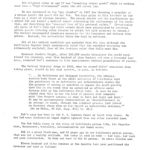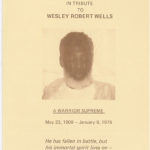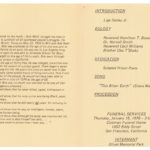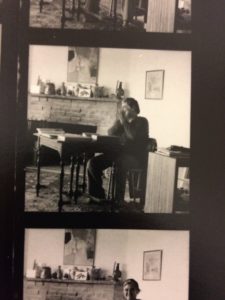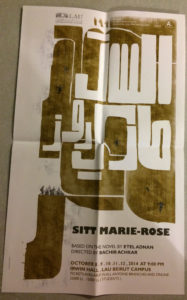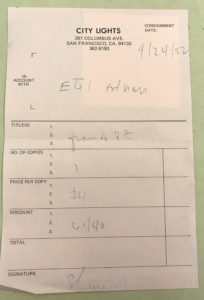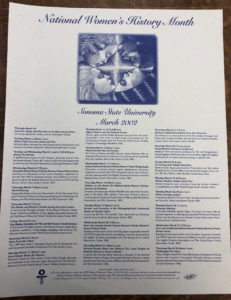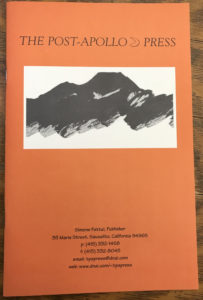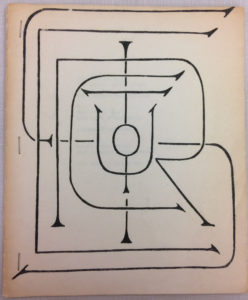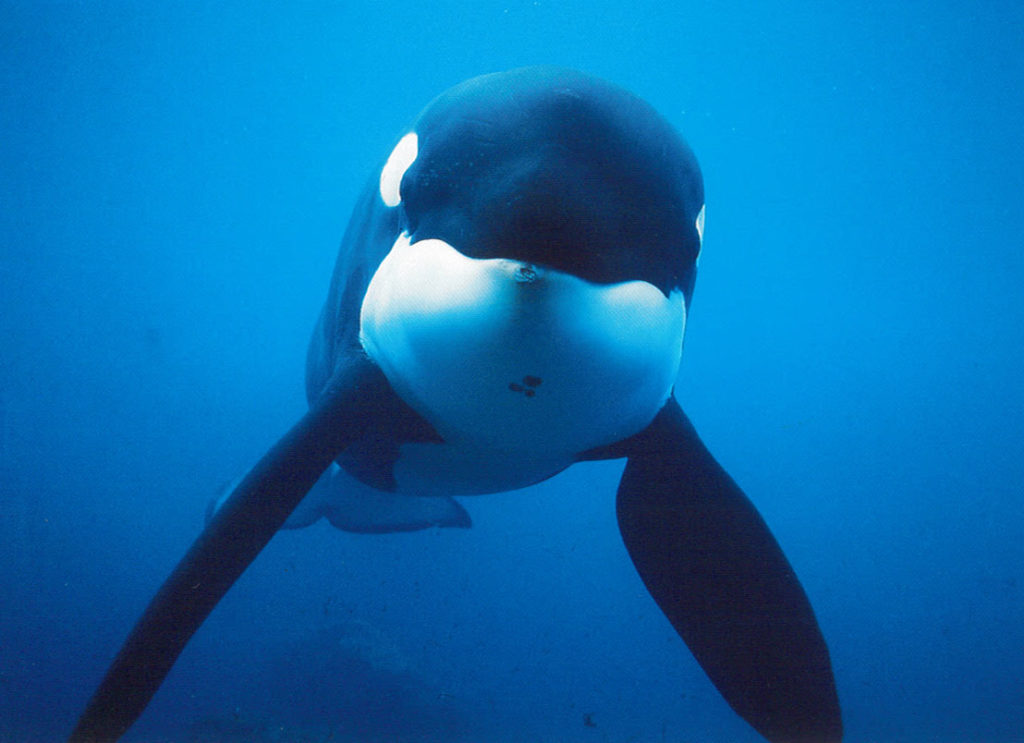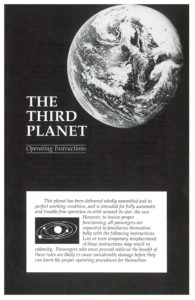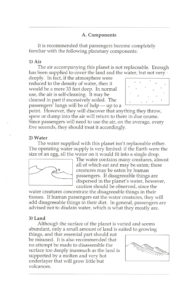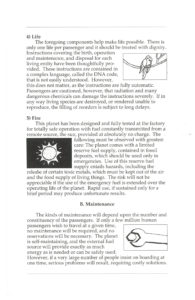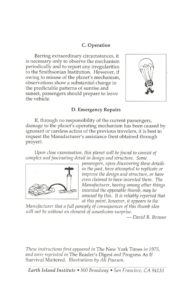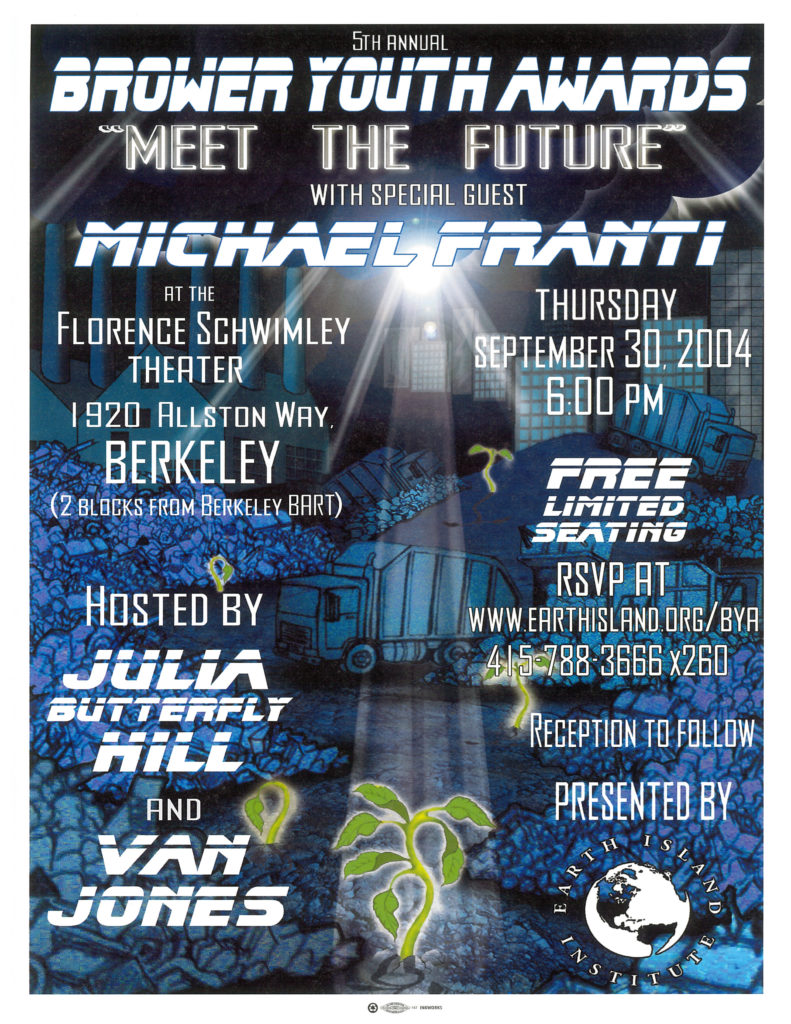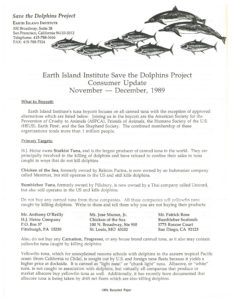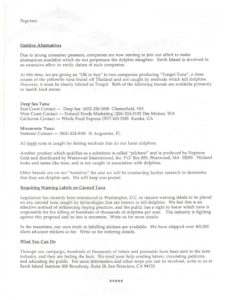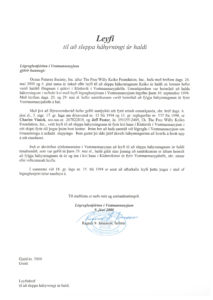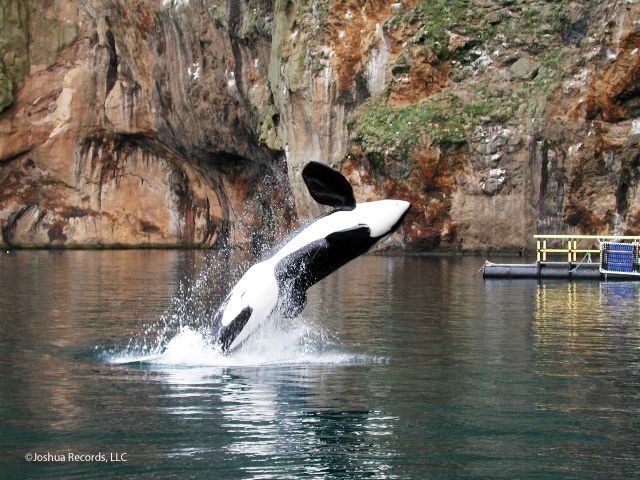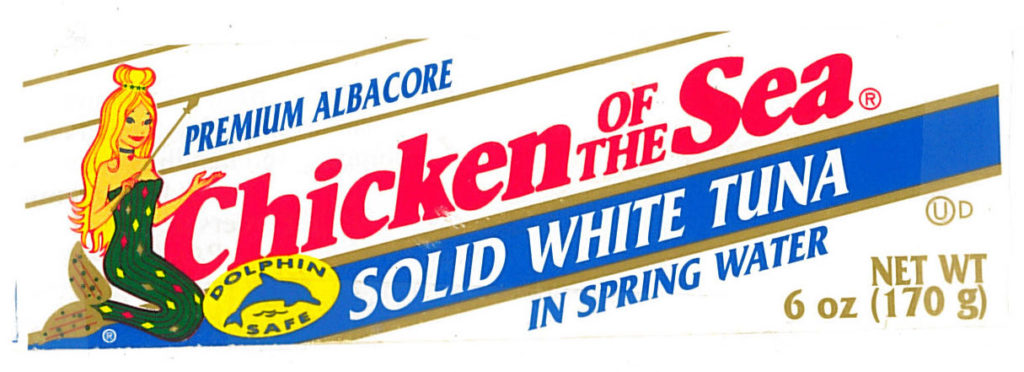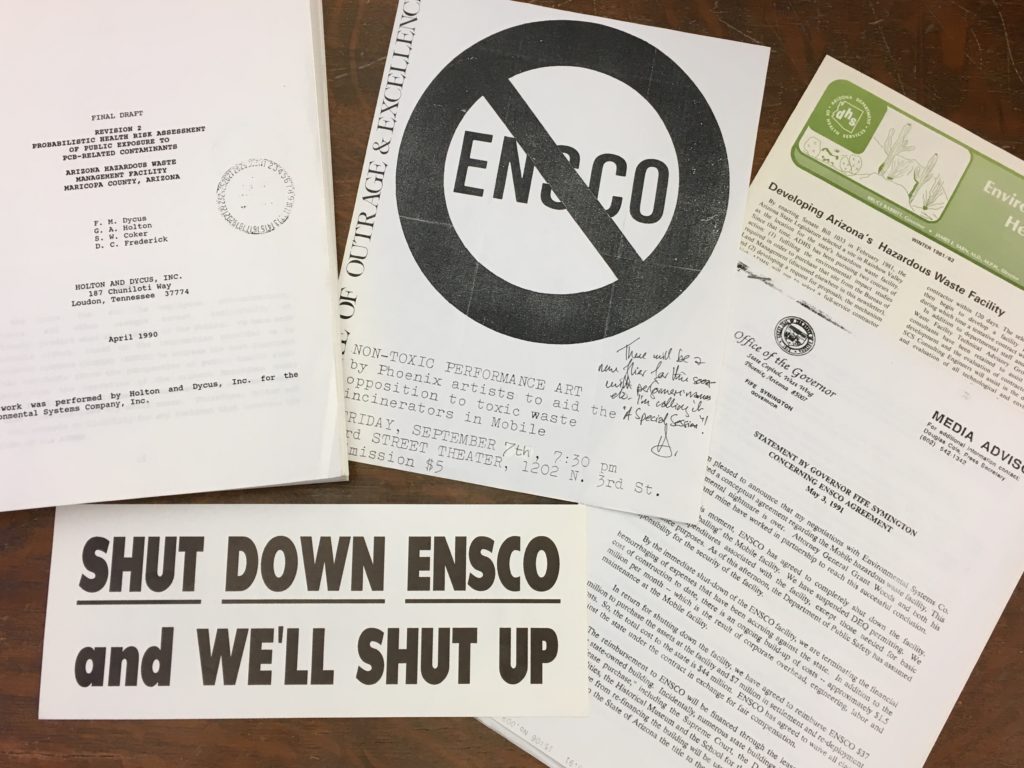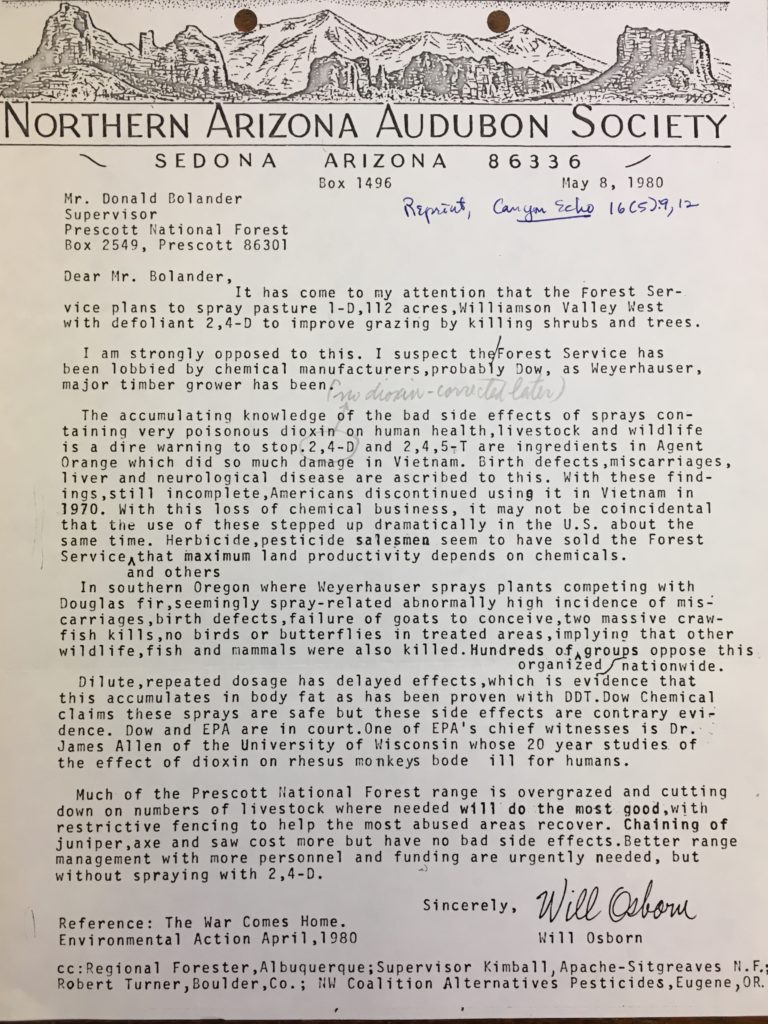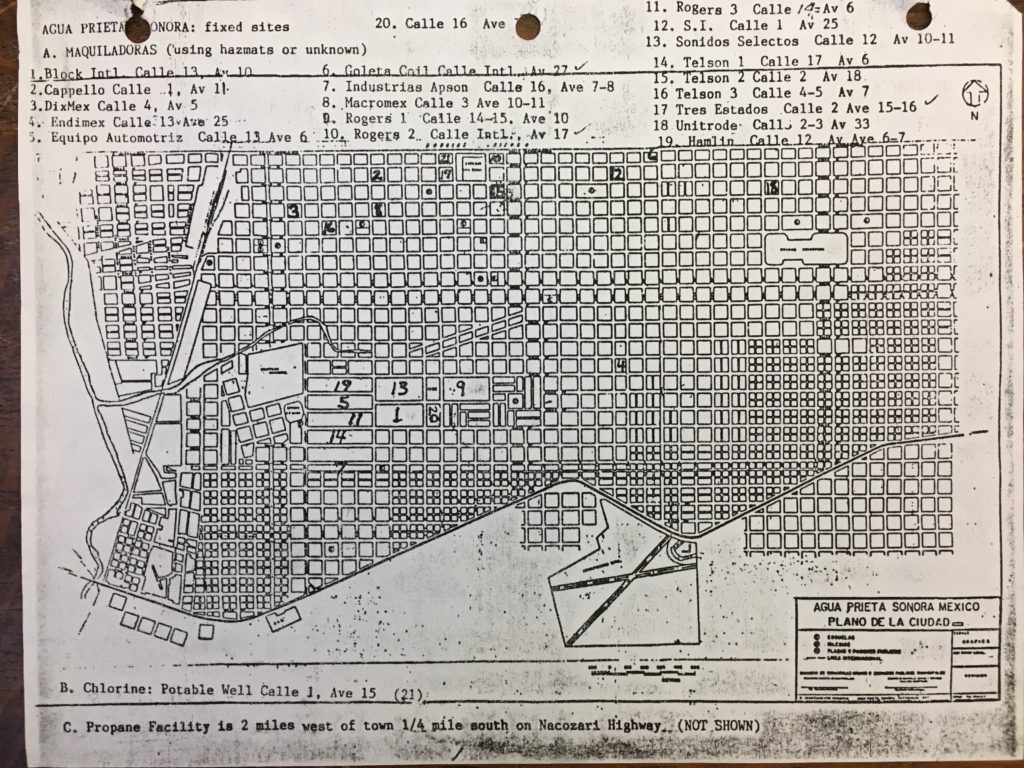Author: UC Berkeley Library
Preprints in social science research
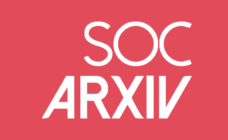

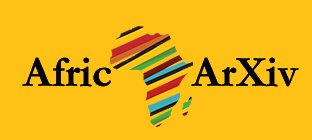
As the movement towards open access to scholarly content gathers momentum, the use of preprints is a central feature. What is a preprint? Before a scholarly research paper has gone through the time consuming peer review process for publication for electronic or print publication in a journal, it is in a form that some scholars refer to as “preprint” (also sometimes called a “working paper,” or simply an unpublished manuscript). Often at this stage the manuscript/paper can be posted and made freely available on a preprint depository or server where scholars can seek an informal kind of peer review from other scholars in their field and also stake a claim to their particular research area.
The Center for Open Science which provides technology and services for preprint management, lists among the goals of preprint depositories:
- Improve accessibility of scholarship
- Facilitate timely feedback on scholarship
- Address delays in research publishing
- Improve scholarly communication
Many disciplines now host printer servers. They were developed in the early 1990s in the high energy physics community with arXiv (the X represents the Greek letter chi, so the word is pronounced “archive”), which was hosted at Los Alamos National Lab and eventually moved to Cornell. Relevant preprint servers in the social sciences include:
- SocArXiv is an open archive for social science research housed at the University of Maryland. Papers are moderated before they appear in SocArXiv to ensure, among other things, that the research is scholarly, relevant to the subject areas supported by SocArXiv, and uses correct attribution. Those posting their papers are encouraged to post accompanying data and code.
- PsyArXiv with a goal of facilitating the rapid dissemination of psychological research, PsyArXiv was created by the Society for the Improvement of Psychological Science (SIPS) and the Center for Open Science.
- AfricArXiv, launched in June 2018, is an interdisciplinary, multilingual resource for scholars based on the African continent or those conducting research in or about Africa.
If you are interested in which depository or server might be a good fit for your own research, either for depositing or for accessing content, feel free to contact the library.
Welcoming Ann Glusker
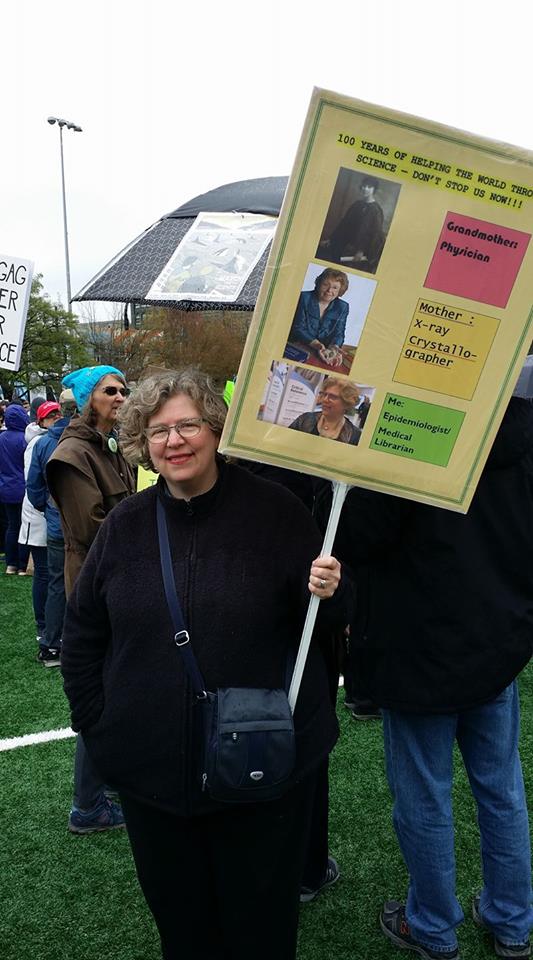 Ann Glusker has recently joined the UC Berkeley Library’s Social Sciences Division as our Sociology, Demography, & Quantitative Research Librarian. Most recently she was the Research & Data Coordinator for the Pacific Northwest regional office of the National Library of Medicine, based at the University of Washington Health Sciences Library in Seattle. She’s also worked as a librarian at The Seattle Public Library, and at the medical library of Kaiser Permanente Washington. In addition, before changing careers to librarianship, she worked as an epidemiologist for the Seattle-King County Public Health department, after studying sociology, demography and public health at the University of Washington and the University of Pennsylvania. She looks forward to working with the Cal community to meet users’ information needs, and is very pleased to be working in a place and a job which incorporates the full range of her interests and experiences.
Ann Glusker has recently joined the UC Berkeley Library’s Social Sciences Division as our Sociology, Demography, & Quantitative Research Librarian. Most recently she was the Research & Data Coordinator for the Pacific Northwest regional office of the National Library of Medicine, based at the University of Washington Health Sciences Library in Seattle. She’s also worked as a librarian at The Seattle Public Library, and at the medical library of Kaiser Permanente Washington. In addition, before changing careers to librarianship, she worked as an epidemiologist for the Seattle-King County Public Health department, after studying sociology, demography and public health at the University of Washington and the University of Pennsylvania. She looks forward to working with the Cal community to meet users’ information needs, and is very pleased to be working in a place and a job which incorporates the full range of her interests and experiences. 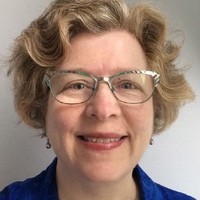
Tell us what YOU think! Help Interlibrary Services by taking a 3-minute survey.
Have you borrowed materials through Interlibrary Services? We want to hear about your experience.
Please take our three-minute survey. Our mission is to support your research, and your feedback will help us better meet your needs.
WHEN: The survey opens April 15
WHERE: Take the survey here
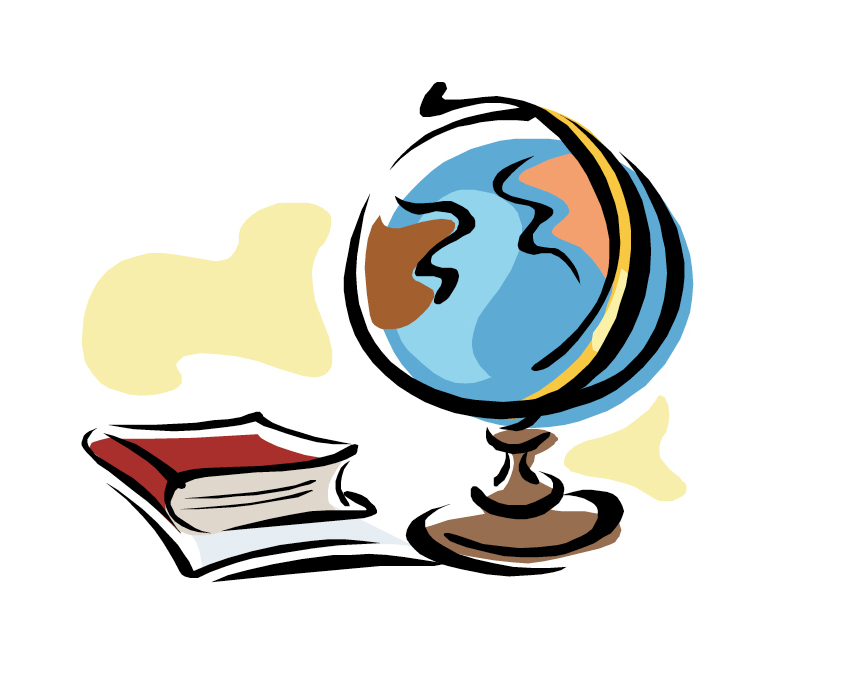
Deadline for Library Prize for Undergraduate Research coming up soon!
We are accepting submissions for the Charlene Conrad Liebau Library Prize for Undergraduate Research now until April 18 at 5 p.m. Undergraduate students of all levels and disciplines may apply. We especially welcome submissions from lower division students, whose projects are judged separately from those of the upper division. More details are available on the website.
Works in progress are eligible. Submissions are open to research projects from a UC Berkeley course in one of the following terms:
- Lower division: Spring 2018, Summer 2018, Fall 2018, Spring 2019
- Upper division: Summer 2018, Fall 2018, Spring 2019
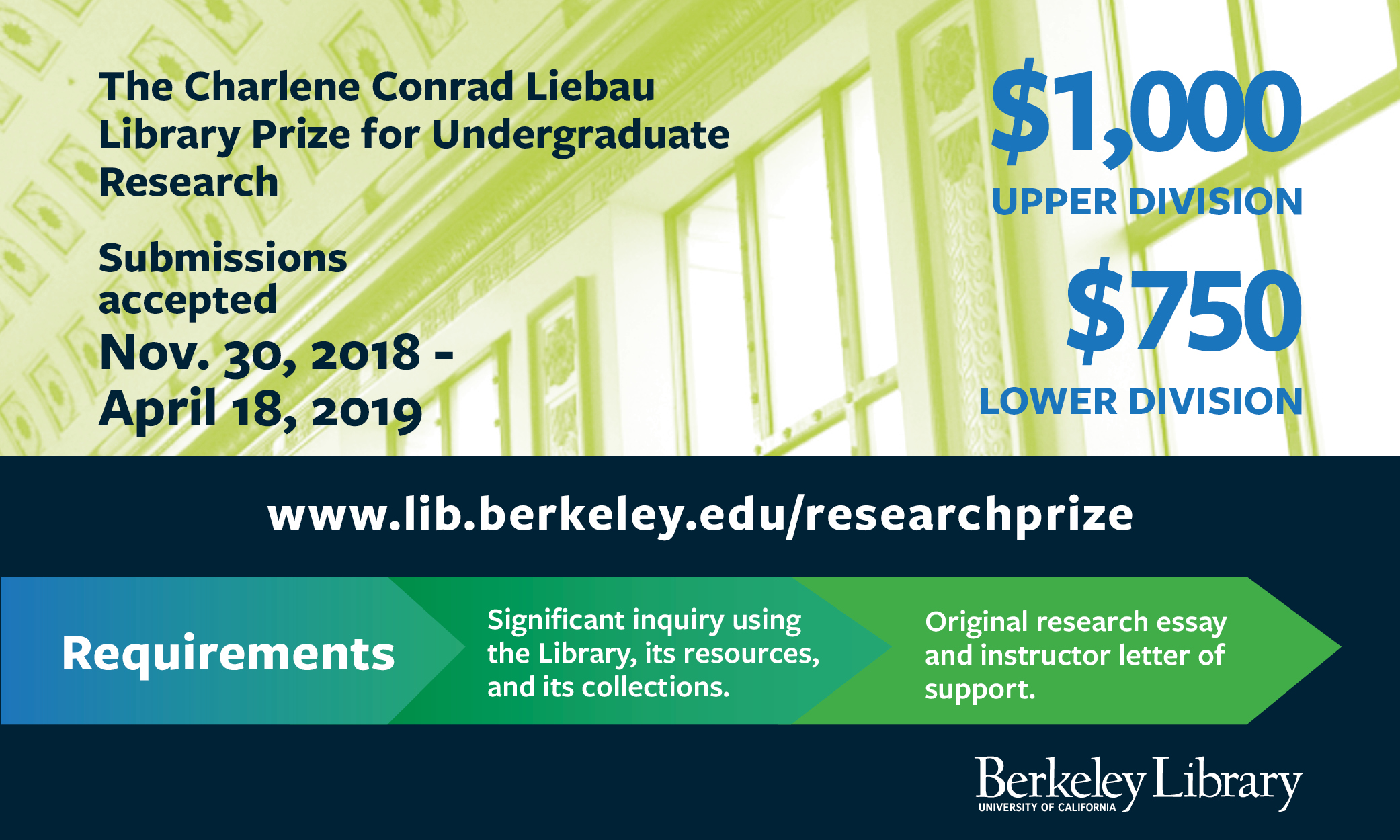
Power Couples in the Archives, Pt. 2: Mary Perry Smith and Norvel L. Smith
Mary Perry Smith (1926-2015) and her husband Norvel L. Smith (1924-1984) were educators, community activists, advocates for social justice, and supporters of African-American culture. The couple met while teaching in Texas and moved to Oakland in 1951. Norvel Smith became the first African American to head a California college when he was appointed president of Merritt College in 1968. He served as president until 1973, when he became Vice Chancellor of Student Affairs at UC, Berkeley. Smith retired from that job in 1982.
In 1970, Mary Perry Smith co-founded the Mathematics Engineering Science Achievement (MESA) program at Oakland Tech High School. MESA’s goal was to provide academic support to students who were historically underrepresented in science and math fields and increase the numbers of African American, Latino, and American Indian graduates from four-year universities. The program spread throughout the state and continues to encourage students to excel in math and science and pursue college degrees in STEM fields: https://mesa.ucop.edu/
In 1974, Smith co-founded the the Black Filmmakers Hall of Fame in Oakland. The organization and its archives are dedicated to studying, teaching, and preserving the contributions Black filmmakers and actors made to U.S. cinema: http://www.blackfilmmakershalloffamearchives.com/.
In addition to their work as educators and cultural advocates, the Smiths were active in the civil rights movement and fought against injustice. Norvel Smith discussed his interest in prison issues and the administration of justice in an oral history he did with the Regional Oral History Office at Bancroft, “A Life in Education and Community Service”:
http://digitalassets.lib.berkeley.edu/roho/ucb/text/SmithNorvelBook.pdf
Smith’s papers document his work as co-chair (with attorney Charles Gary) of the Bob Wells Defense Committee, which worked to get Robert Wesley Wells off death row in the 1970s.
The Mary Perry Smith and Norvel L. Smith papers document the couples’ professional work and community activism and are open for research at The Bancroft Library.
Finding aid to the Mary Perry Smith papers (BANC MSS 2016/195):
http://oac.cdlib.org/findaid/ark:/13030/c8th8ss0
Norvel L. Smith papers (BANC MSS 2016/199):
Power Couples in the Archives, Pt. 1: Etel Adnan and Simone Fattal
Lebanese-American philosopher, poet, essayist, and visual artist Etel Adnan met her partner, Syrian painter, sculptor, and translator, Simone Fattal in Beirut in the 1970s. The couple moved to Sausalito, California in 1977, and in 1982, Fattal founded the Post-Apollo Press to publish Adnan’s poem, “From A to Z,” and an English translation of Adnan’s award-winning novel about the Lebanese civil war, “Sitte Marie Rose.” The Bancroft Library holds Adnan’s papers and the Press’ records. There is overlap between the two collections, and it made sense to process them at the same time.
The Post-Apollo Press specializes in works of experimental poetry, prose, and translation and is an influential part of the Bay Area literary scene. A few of the many renowned poets published by the press include Anne-Marie Albiach, Barbara Guest, Lyn Hejinian, and Leslie Scalapino. The Post-Apollo Press records are one of many feminist press collections held by The Bancroft Library.
Adnan and Fattal currently reside in Paris. You can see an exhibit of 15 new paintings from the 93-year-old Adnan at the San Francisco Museum of Modern Art until January 6, 2019:
https://www.sfmoma.org/exhibition/new-work-etel-adnan/
The Etel Adnan papers (BANC MSS 2018/206) and the Post-Apollo Press records (BANC MSS 2001/101 c) are both open for research at The Bancroft Library. Both collections contain correspondence with prominent 20th and 21st Century artists and writers, as well as manuscript materials, and ephemera from art and literary events throughout the world.
Etel Adnan papers: http://oskicat.berkeley.edu/record=b24620423~S1
Post-Apollo Press records: http://oskicat.berkeley.edu/record=b16207195~S6
— Marjorie Bryer
Update: Moffitt Library’s first floor reopened after flooding
Moffitt Library’s first floor has reopened after flooding forced it to close last week.
The library will be open for studying for RRR week and finals, although working electrical outlets will be in short supply.
The flooding, brought on by heavy rains, had forced an evacuation of Moffitt’s first floor last week and caused classes held on that floor to be relocated.
Stay tuned for updates.
Update: UC Berkeley Library adjusts hours for Thanksgiving week
The UC Berkeley Library is announcing adjusted hours for the week of Thanksgiving after continued air quality issues have led the university to cancel classes.
(Check the hours page for updates.)
The modified hours for Thanksgiving week are as follows:
Monday
Doe Library: 8 a.m.-5 p.m. (shortened hours)
Most other libraries, including the ones below, are open with normal hours:
The Bancroft Library
Northern Regional Library Facility (NRLF)
Others will be updated as final decisions are made.
Wednesday
Most libraries are open, but all are closing at 5 p.m. due to the holiday.
Thursday
Libraries closed for the holiday.
Friday
Libraries closed for the holiday.
Saturday
Libraries closed for the holiday.
Sunday
Most libraries open normal hours.
Between the Devil and the Deep Blue Sea: This is Not a Fish Story , This is a Fish Story
What would it be like to fly halfway around the world on a non-stop flight from Newport, Oregon to Vestmannaeyjar, Iceland aboard a C-17 Air Force transport plane with a small crew of environmentalists, veterinarians, and an internationally famous 21-foot long, 10,000 lb. orca “killer whale”?
Detailed answers to that question and much, much more can be found in the Earth Island Institute records, a newly processed collection now open to researchers at The Bancroft Library.
Earth Island Institute is a Berkeley based non-profit conservation group founded in 1982 by David Brower that acts as an incubator to support a global network of ecological and social justice projects working to conserve, protect and restore the environment. Born in 1912, Brower entered the University of California at Berkeley at age 16 with a plan to study entomology, but due to financial pressures had to leave school by his sophomore year.
Located in the David Brower Center in downtown Berkeley, you may have walked by or visited the LEED Platinum rated building, read the Earth Island Journal publication, or be familiar with Earth Island’s work going back to the late 1980s on the dolphin-safe tuna campaigns. Those campaigns helped to heighten awareness of dolphin by-catch mortality levels during purse seine net and drift net fishing practices for tuna fish, reform marine mammal protection laws and establish the dolphin-safe tuna labels.
One of Earth Island’s other major projects began in 1994 after the film Free Willy was released by Warner Bros. and brought worldwide attention to the plight of captive marine mammals everywhere, although especially for the orca “killer whale” known as Keiko who starred as Willy. First captured off Iceland in 1979, Keiko was owned by Reino Adventura, a theme park in Mexico City, Mexico during the film’s production. After Earth Island Institute, numerous animal welfare groups, environmentalists and children from around the world rallied to free Keiko, Reino Adventura agreed to donate him to the newly formed “Free Willy Keiko Foundation” for a program of rehabilitation at the Oregon Coast Aquarium in Newport for eventual release back to the wild.
What happened to Keiko from then on is now in the historical record and up for research and debate. Although Keiko was released back into the wild, first into the Iceland sea pens in September 1998 and then into Iceland’s open waters, he died off the coast of Norway in December 2003 from pneumonia and possibly hunger, having lost the ability to fish for himself after being held captive so many decades. Since 1961, hundreds of killer whales, or orcas (actually a type of dolphin) have been captured and used in theme parks to entertain, and some would argue to educate, the public on the beauty and wonder of these magnificent beings.
As of 2018, there are approximately 60 captive orcas and countless dolphins and other marine mammals being held and used for entertainment at theme parks primarily in China, France, Japan, Russia, Spain and the United States. And yet, captive orcas are certainly not the only killer whales in harm’s way. As evidenced in a number of recent studies, films and news stories – orca populations in the wild are dwindling at rapid rates as declining fish stocks, marine pollution and other factors like increased shipping traffic have caused them to be at extreme risk for extinction. The time to learn about orcas, marine mammals, the greater ecosystem of our world environment and how we can improve life for all creatures of the land, air and sea is now!
The processing of the Earth Island Institute records is part of a two-year NHPRC-funded project to process a range of archival collections relating to environmental movements in the West. A leading repository in documenting U.S. environmental movements, The Bancroft Library is home to the records of many significant environmental organizations and the papers of a range of environmental activists.
Environmental Justice Grit in the Borderlands
Environmentalists make terrible neighbors, but great ancestors. – David Brower
It would be difficult not to notice a common thread of diligent, dogged persistence across the broad spectrum of environmental justice activism. This tenacity, coupled with a long view of the world and a whole lot of hard work, is what makes for some of the most successful environmental justice campaigns.
While success cannot be measured in one brief moment or win where environmental issues are concerned, each victory adds to the larger picture of global environmental awareness and health of the planet. Multiple stories of such environmental justice grit can be found in the collections at The Bancroft Library and one collection in particular is the newly opened records of Arizona Toxics Information.
Focused primarily on environmental concerns in the Arizona/Mexico border region during the 1970s through 1990s, Arizona Toxics Information was founded by conservationist Michael Gregory in 1990. The collection also includes materials collected by Gregory before Arizona Toxics Information was established when he worked with the Sierra Club Grand Canyon Chapter and grassroots environmental groups. Gregory had been employed by the United States Forest Service in the early 1970s and had witnessed the spraying of herbicide 2,4,5-T in national forests while he was stationed at fire outlook towers. 2,4,5-T is one of the main components of Agent Orange, which had already been banned for use in Vietnam due to its known harmful health effects and birth defects. From there, Gregory set about to research, collect information, write articles and lobby to end the practice of herbicide, pesticide and insecticide spraying in national forests and range lands.
In addition to the fight for pesticide use awareness and regulations, Arizona Toxics also ran several successful campaigns to shut down the Phelps-Dodge Corporation’s Douglas Reduction Works (copper smelter), the ENSCO hazardous waste management facility (PCB incinerator), and to improve the overall air and water quality of Arizona. As the Environmental Protection Agency’s Integrated Environmental Plan for the U.S.-Mexico Border Area and the North American Free Trade Agreement (NAFTA) were being drafted in the early 1990s, Arizona Toxics Information lobbied and organized grassroots groups on both sides of the border to share information and rally for a multitude of environmental commitments in the agreements. These commitments included providing the public the “right-to-know” about pollutants being released from factories on both sides of the United States-Mexico border, regulating maquiladoras (factories in Mexico that are generally owned and operated by foreign companies which assemble products often to be exported back to the country of that company), and developing emergency disaster plans to respond to hazardous waste accidents.
The current status of NAFTA casts some doubt on the future of these agreements. The opening of the records of Arizona Toxics Information provides timely documentation of hard-won environmental justice victories on the US-Mexico border.
The processing of the Arizona Toxics Information records is part of a two-year NHPRC-funded project to process a range of archival collections relating to environmental movements in the West. A leading repository in documenting U.S. environmental movements, The Bancroft Library is home to the records of many significant environmental organizations and the papers of a range of environmental activists.
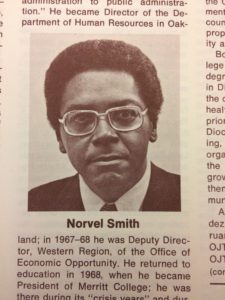

![[Mary Smith and her mother, undated]](https://update.lib.berkeley.edu/wp-content/uploads/2018/12/MaryandMom-1.jpg)
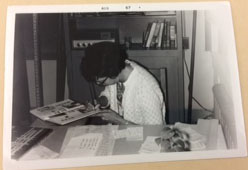
![Mary Smith [with MESA] colleagues, undated](https://update.lib.berkeley.edu/wp-content/uploads/2018/12/Mary_Colleagues-1.jpg)
